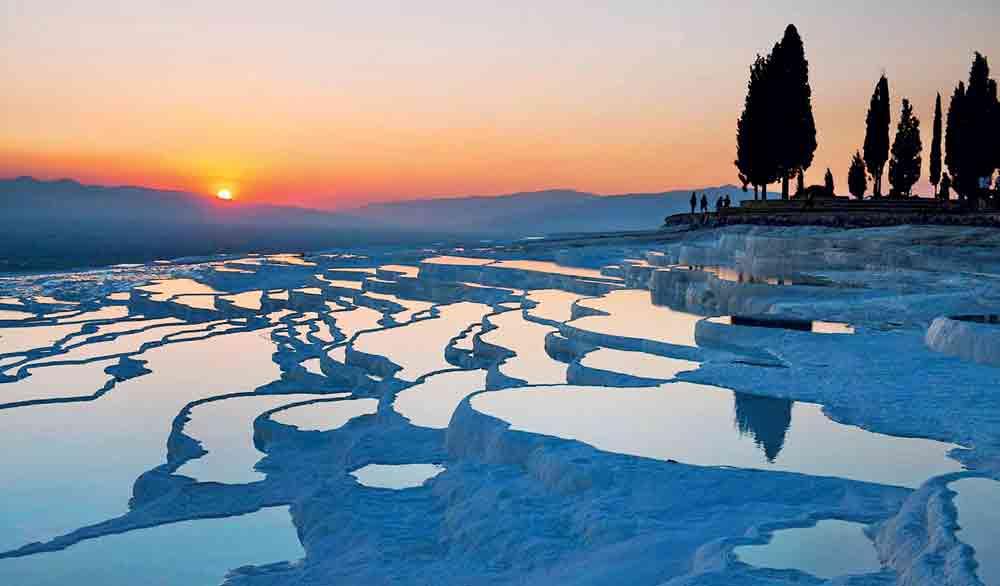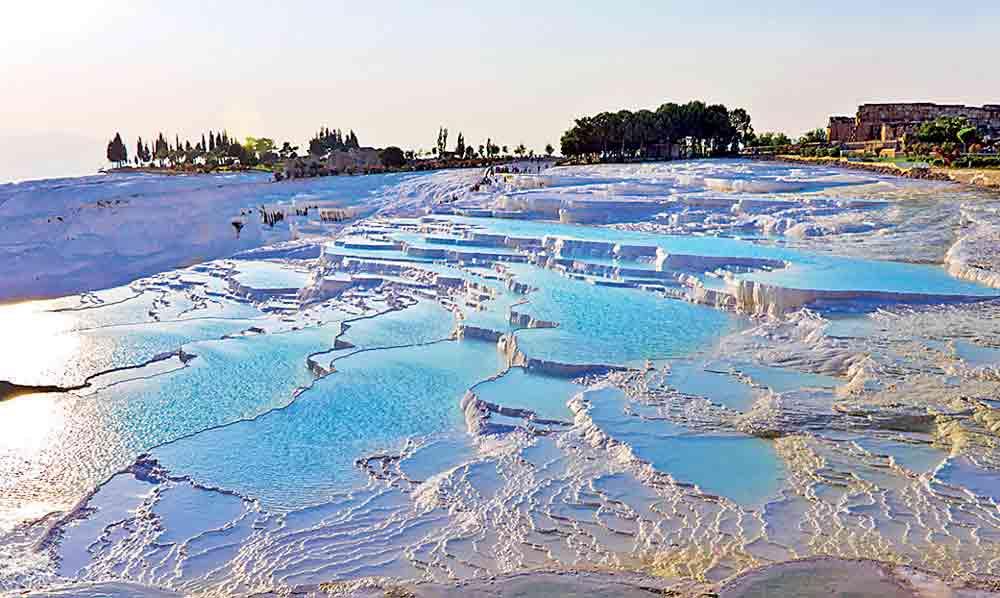
There are places that seem to belong not to this Earth, but to dreams. Landscapes so ethereal that they make you question what’s real. Nestled in southwestern Turkey, in the Denizli Province, lies one such wonder Pamukkale, a shimmering white paradise of mineral terraces, thermal pools, and ancient history.
 The name Pamukkale translates to “Cotton Castle” in Turkish and it fits perfectly. From afar, the landscape looks like a snow-covered mountain, or a cloud fallen to the ground. But as you draw closer, you realize it’s something even more extraordinary, a series of gleaming white travertine terraces, formed over thousands of years by mineral rich hot springs. Water flows gently down the slopes, leaving behind dazzling layers of calcium that glisten in the sunlight like satin.
The name Pamukkale translates to “Cotton Castle” in Turkish and it fits perfectly. From afar, the landscape looks like a snow-covered mountain, or a cloud fallen to the ground. But as you draw closer, you realize it’s something even more extraordinary, a series of gleaming white travertine terraces, formed over thousands of years by mineral rich hot springs. Water flows gently down the slopes, leaving behind dazzling layers of calcium that glisten in the sunlight like satin.
To stand here is to stand in a place where nature and time have created art slowly, patiently, beautifully.
The story of Pamukkale began long before the first travelers ever set eyes on it. The region sits atop a geological fault line that heats groundwater deep below the earth. When this hot water rises to the surface, it carries with it high concentrations of calcium carbonate. As the water cools and evaporates, it leaves behind gleaming white deposits the very material that forms the terraces we see today.
Over thousands of years, these deposits have built natural pools, each cascading into the next like a frozen waterfall. The result is breathtaking an otherworldly staircase of turquoise and white that stretches down the hillside for nearly 2.5 kilometers.
Walking barefoot across the warm, smooth surface (which visitors are allowed to do in designated areas) feels like stepping across clouds. The water is soothingly warm, often around 35–36°C (95–97°F) and gently laps at your ankles. The terraces glow golden at sunrise and blush pink at sunset moments when Pamukkale feels less like a destination and more like a dream made real.
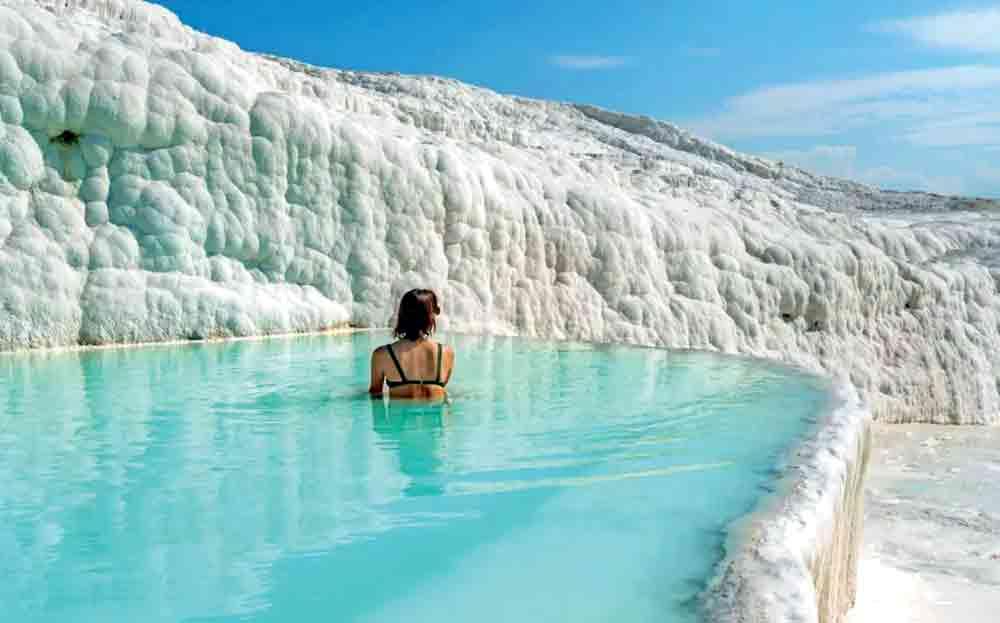
But Pamukkale isn’t just a natural wonder. It’s also a window into the past. Perched just above the terraces lie the ancient ruins of Hierapolis, a city founded by the Phrygians more than 2,000 years ago.
The ancient Greeks and Romans believed that the thermal waters of Pamukkale possessed healing powers. They built temples, baths, and sanctuaries around them, transforming Hierapolis into a grand spa city, a sanctuary for wellness and worship. Today, the ruins of this once glorious city still whisper stories of devotion, health, and beauty.
You can wander through its wide, colonnaded streets, explore the remains of Roman baths, and marvel at the majestic theatre, which once held 12,000 spectators. The view from its upper tiers overlooking the shining white terraces below is nothing short of majestic.
And then there’s the Antique Pool, sometimes called Cleopatra’s Pool. Legend says that Cleopatra herself once swam here, and it’s easy to see why she might have been drawn to it. The pool is fed by the same thermal waters that feed the terraces, filled with warm, crystal-clear water and surrounded by fallen Roman columns that rest peacefully at the bottom. Swimming here feels like bathing in history a place where luxury, myth, and nature intertwine.
What makes Pamukkale so fascinating is that it’s still alive, still forming, still changing. The thermal waters continue to flow, continuously shaping new terraces as they have for millennia.
Because of this fragile balance, Pamukkale is carefully protected today. In the 1980s, it was declared a UNESCO World Heritage Site, both for its natural and cultural significance. The Turkish government and UNESCO have since worked together to restore the site’s beauty, closing nearby hotels that once polluted the pools and rerouting the flow of water to ensure the terraces remain pristine.
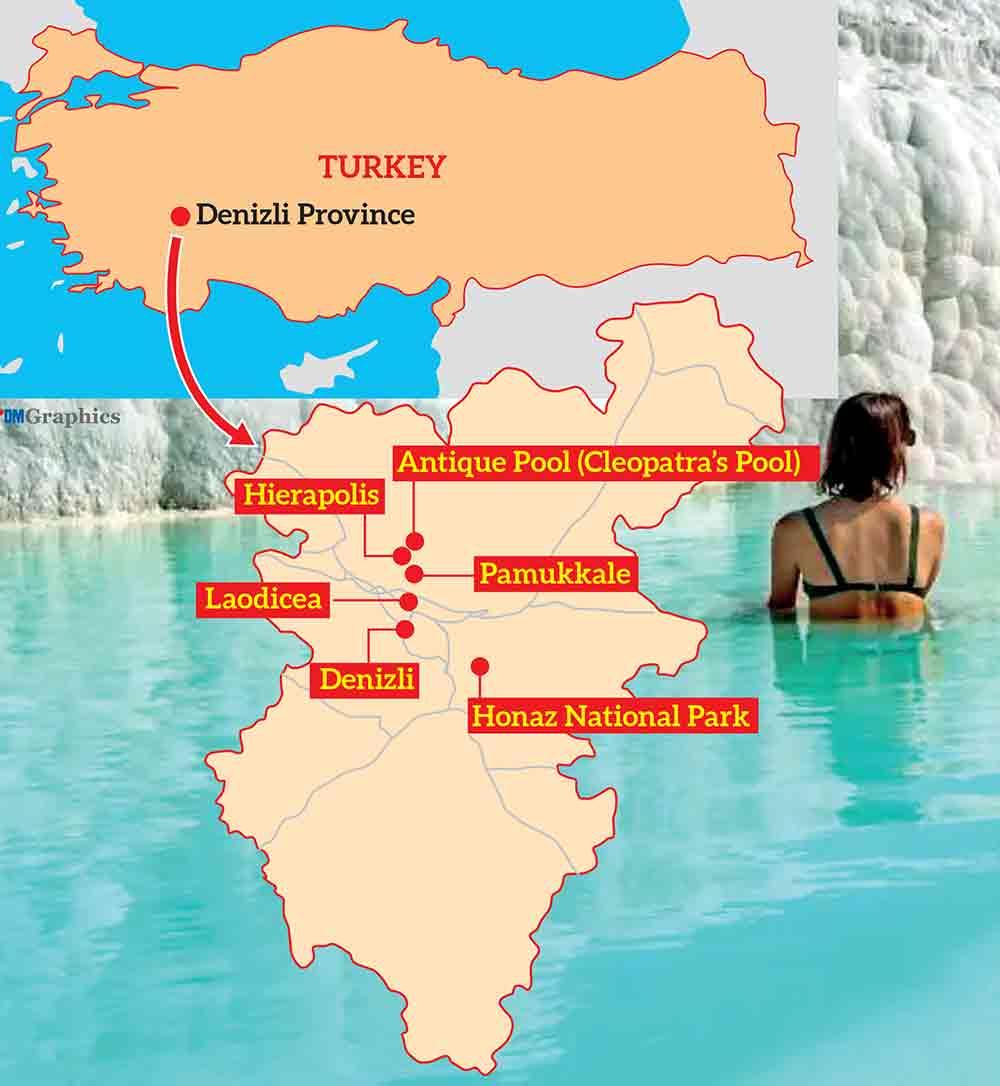
Now, visitors can enjoy the site in its true glory pure, white, and endlessly mesmerizing. The designated pools for bathing are regularly replenished, so travelers can still experience the magic of soaking in Pamukkale’s warm, healing waters without harming its delicate ecosystem.
Pamukkale’s beauty changes with the light. In the early morning, the terraces gleam like fresh snow, untouched and silent. By midday, the sunlight turns them into mirrors, reflecting the sky in dazzling shades of blue and white. As evening falls, the waters catch the sunset’s glow, painting the landscape in hues of rose, amber, and gold.
Each hour brings a new personality to the Cotton Castle. It’s as if the place breathes alive with light and reflection. Many visitors return at different times of the day, unable to resist seeing how it transforms. Some say that sunrise is the most magical when mist rises gently from the warm water, and the whole landscape seems to float between earth and heaven.
For centuries, people have come to Pamukkale not only for its beauty but also for its healing qualities. The water, rich in minerals like calcium and magnesium, is said to soothe joint pain, improve circulation, and rejuvenate the skin.
Locals still believe in its restorative power. You’ll often see them sitting quietly in the pools, letting the warmth ease their bodies as they chat softly or simply gaze into the horizon. There’s something deeply peaceful about the ritual a kind of communion between humans and nature.
Even if you don’t believe in miracles, there’s no denying the tranquility that the waters bring. As you soak your feet in the thermal pools and watch the water ripple under the soft Turkish sun, it’s easy to feel lighter as though the world’s noise has melted away.
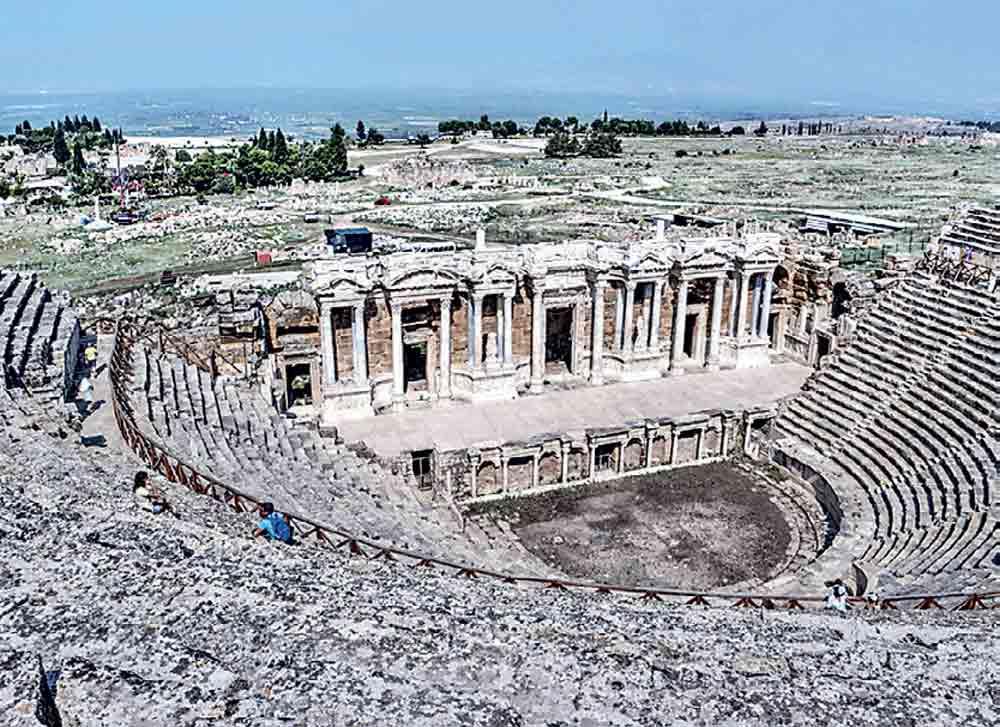
While Pamukkale is the centerpiece, the surrounding region holds many more treasures waiting to be explored. The town of Denizli nearby offers glimpses of local life bustling markets, delicious Turkish sweets, and traditional carpet shops where artisans weave patterns that have been passed down for generations.
A short drive away, you can visit Laodicea, another ancient city that was once one of the Seven Churches of Revelation, or venture into the lush Honaz National Park, where the mountains cradle small waterfalls and hidden trails.
But no matter how far you wander, you’ll find that every path seems to lead back to Pamukkale, the heart of it all, gleaming like a pearl against the Turkish landscape.
Pamukkale isn’t just a place to see it’s a place to feel. The moment you take off your shoes and step into the warm, milky water, you sense something ancient and sacred. You’re walking across the same terraces that emperors and travelers have admired for thousands of years. You’re standing in the same light that poets and painters have tried to capture.
And perhaps most beautifully, you realize that Pamukkale is still creating itself a reminder that nature is an artist whose work is never finished.
In a world where so many destinations are hurried and crowded, Pamukkale offers something rare stillness. Here, time slows down. The air is filled with warmth, the water hums softly, and the horizon stretches endlessly. It’s a place where you don’t just take photographs; you take deep breaths.
You leave with your feet whitened by mineral water, your mind quieted by beauty, and your heart a little lighter.
Pamukkale teaches you that magic doesn’t always need to be loud. Sometimes, it’s just the sound of water flowing over stone slow, eternal, and endlessly beautiful.
Because once you’ve stood in the Cotton Castle of Turkey, you’ll never forget the feeling of being between sky and earth, between the ancient and the eternal where time flows, and beauty never fades.
